
House voting now to avoid debt default

NOW: House is voting to extend debt ceiling through early December
From CNN’s Clare Foran
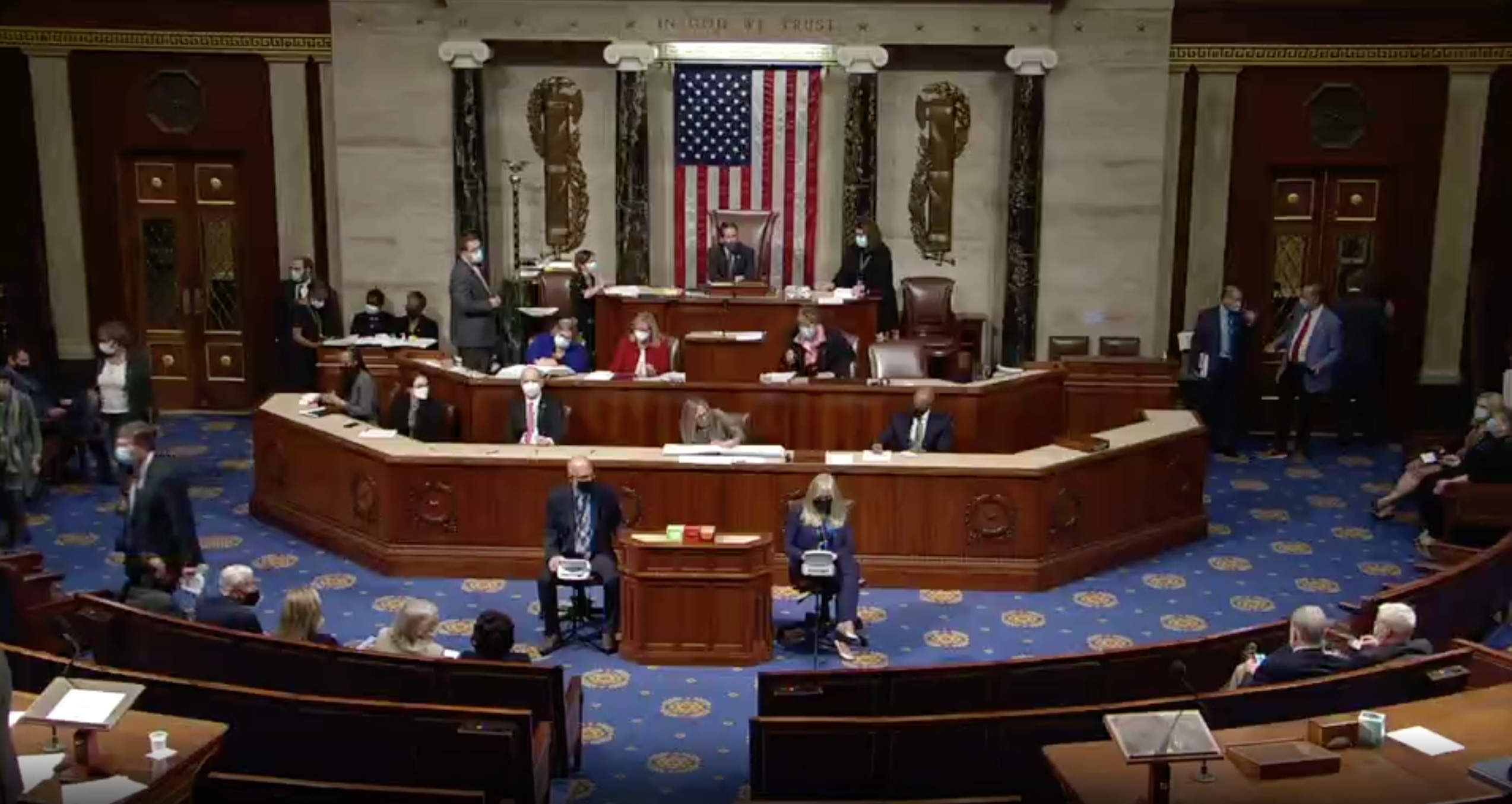
The House is voting now to extend the nation’s debt limit through early December after the Senate approved a stopgap measure last week in a bid to avert a catastrophic default and economic disaster.
The House is not taking a stand-alone vote to approve the debt ceiling extension. Instead, the extension will be passed when the House votes to approve a rule governing floor debate on three separate measures. The complex procedural maneuver means that lawmakers uncomfortable about taking a tough vote to increase the debt limit won’t have to vote directly for it.
Once the Democratic-controlled House passes the short-term extension, it will be cleared for President Biden’s signature.
But the temporary debt limit extension is only a short-term fix and sets up another looming potential fiscal crisis later this year when it runs out.
How we got to today’s vote: Treasury Secretary Janet Yellen had warned lawmakers that the federal government would likely run out of cash by Oct. 18 unless Congress raised the debt ceiling, setting up a ticking clock and high stakes.
After weeks of partisan deadlock over the issue, Senate Majority Leader Chuck Schumer announced last week that a debt limit deal had been reached, paving the way for the Senate to vote to pass the agreement.
An aide familiar with negotiations told CNN that the agreement increases the ceiling by $480 billion, which is how much the Treasury Department told Congress it would need to get to Dec. 3.
The announcement of the deal came a day after Senate Minority Leader Mitch McConnell publicly floated a debt ceiling proposal as an offer to Democrats, a move that sparked negotiations between the two parties to reach an agreement.
Proxy voting hits new high for debt ceiling vote
From CNN’s Kristin Wilson and Annie Grayer
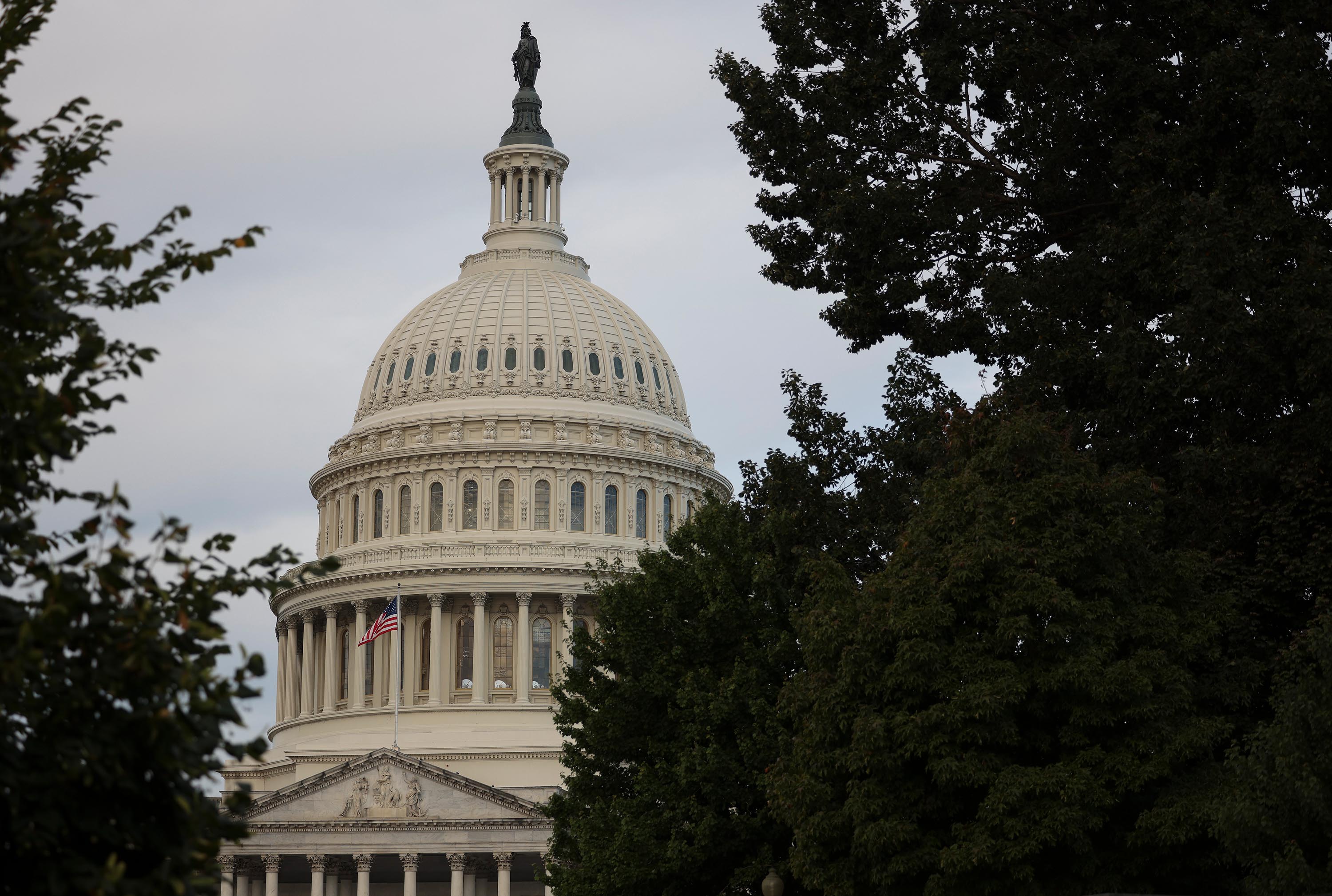
Nearly half of House lawmakers have submitted paperwork to not vote in person today, as the House was called back into session to take some last minute votes including one to address the debt ceiling.
As the House approached the scheduled vote series, 197 members of the House of Representatives had sent a letter designating another member to vote on their behalf, using a system called proxy voting. The number of members who filed letters to use this practice climbed dramatically throughout the day in the lead up to the House officially returning into session.
“Each member has to speak for themselves, but we put this procedure and process in place to accommodate people during this health crisis,” House Rules Committee Chairman Jim McGovern said. “I can tell you I’ve never used proxy voting because I’ve never fallen into the criteria that we set when we put these rules together.”
Each member who signs a letter that’s filed with the Clerk of the House affirms that they are “unable to physically attend proceedings in the House Chamber due to the ongoing public health emergency.” The policy was first put into effect May 2020 in response to the health risks associated with people gathering in person and traveling from their home states to Capitol Hill, but has since become widely abused by members on both sides of the aisle to be able to cast votes while attending political events, travel, or — as with the votes today – to not interfere with a week at home.
“This was put in place out of necessity and not out of convenience,” McGovern said. “I remind people every chance I get that the criteria is the criteria, and that you need to know you may be asked why you’re not here and you better make sure you’re following the rules.”
House Speaker Nancy Pelosi has continued to extend the use of proxy voting since it was first implemented. The current covered period is not set to expire until Nov. 15.
CNN did an in depth report in July detailing how this system has been misused on both sides of the aisle.
Progressives not backing down on strategy for how to cut spending bill
From CNN’s Lauren Fox and Annie Grayer

House progressives aren’t backing down on their push to fund as many programs as possible in their social safety net bill even if that means sunsetting the programs sooner.
In a call with reporters Tuesday, progressive lawmakers including House Progressive Caucus Chairwoman Pramila Jayapal said they would be willing to make compromises on President Biden’s social safety net package to get a final deal, but that they still need to hear from moderate Democratic Sens. Joe Manchin and Kyrsten Sinema about what they want cut to bring the price tag down before negotiations go any further.
“It is absolutely incumbent upon the senators and the few members of the House in opposition to start telling us what they want,” Sen. Bernie Sanders, who serves as chair of the Senate Budget Committee, said. “We are prepared to negotiate, we are prepared to compromise, but we’re not going to negotiate with ourselves.”
Jayapal echoed Sanders by saying, “we still don’t have a counter proposal.”
The call highlighted the ongoing tensions Democrats face within their own ranks as the President’s agenda has been stalled on Capitol Hill and as the party begins to grapple with what a smaller package will actually include.
Democrats had been planning for a $3.5 trillion package, but Sinema and Manchin have both said they won’t go that high, with Manchin pledging he’d be willing to spend just $1.5 trillion, not even half.
While many moderates and even the Speaker have hinted that they’d prefer to cut the number of programs the Democrats’ social safety net bill will include in order to do those programs more fully, progressives were unified that they would prefer cutting down the length of programs that currently exist in the package, instead.
“A majority of our members have made clear that they support the idea of keeping our five priority areas,” Jayapal said, making the case that progressives did not want to pit priority programs like childcare or climate change against each other. “If we need to cut some of them back to fewer number of years, we would be willing to do that.”
More background: Pelosi said in a letter to Democrats last night that she thought the strategy forward was to do “fewer things well” but when pressed on that perspective today, suggested that she hopes no programs will have to be cut and instead the timeframe for each provision could be reduced to cut the bill’s cost.
Sanders told reporters that the expansion of Medicaid provisions in the package is to include dental and hearing and is crucial to keeping in the final version of the bill.
“This to me is not negotiable,” Sanders said, to which Jayapal affirmed was the position of the House Progressive Caucus as well.
During the call, progressives also reaffirmed their position that the social safety net bill has to move in tandem with the infrastructure bill.
“The two move together or not at all, and we believe the two will move together” Jayapal said.
When Jayapal was asked if she believed negotiations would wrap up by the end of October, when the extension for highway worker funding would expire, she said, “I think arbitrary deadlines are never good. We all want to work as quickly as we can.”
White House says it doesn’t “get too glum” about array of challenges facing administration
From CNN’s Allie Malloy
White House press secretary Jen Psaki downplayed concerns inside the White House when pressed by CNN’s Kaitlan Collins Tuesday on how President Biden views the array of challenges facing his administration, including the standoff among Democrats over his domestic agenda.
“We don’t get too glum around here even if things get challenging. Our view and his view is to continue to press forward and address the challenges the American people are facing,” Psaki said when asked by Collins about issues facing the White House including Biden’s domestic agenda, the jobs report and rising gas prices.
Psaki reiterated that the administration is also working on these issues “one at a time” and said Biden’s view is that it’s his “responsibility to continue to forge ahead every day and to work to address the challenges the American people are facing.”
“He also recognizes that getting something done for the American people, working with members of Congress to do exactly that — to forge a path forward, to unite the Democratic party is what people have elected him to do, to address the challenges we’re facing in the long term,” Psaki added.
Pelosi suggests Congress may need to pass new legislation to make it easier to raise debt ceiling
From CNN’s Manu Raju and Morgan Rimmer
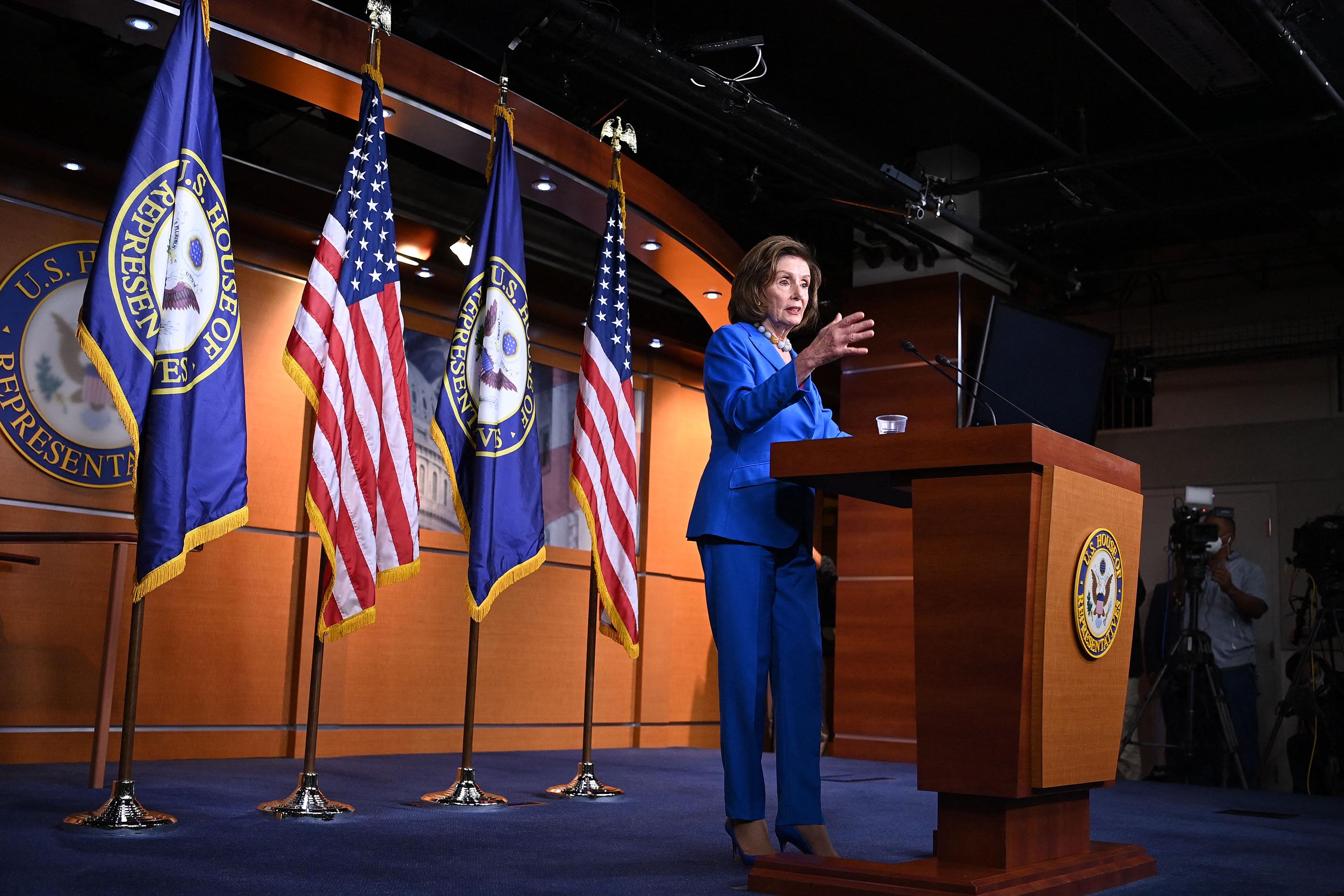
On the future debt ceiling fight looming later this year, as long as the House passes today’s stopgap measure as predicted, House Speaker Nancy Pelosi suggested Congress may have to pass new legislation to make it easier to raise the debt ceiling.
This includes a mechanism that would allow Congress to essentially override the Treasury Department’s determination that the debt ceiling has been breached.
A similar plan was done during the Obama years and was originally floated by Mitch McConnell.
“That seems to have some appeal on both sides of the aisle, because of the consequences to people of not lifting it,” said Pelosi. “I think it has merit.”
But such legislation would require 60 votes in the Senate.
She indicated her preference to passing a debt ceiling increase with Republicans. But she didn’t explicitly say that she would close the door on using the budget process to pass a debt ceiling increase later this fall.
“We’re just hoping that we can do this in a bipartisan way,” she added.
Why a debt ceiling crisis will still loom even after the House votes today
From CNN’s Clare Foran
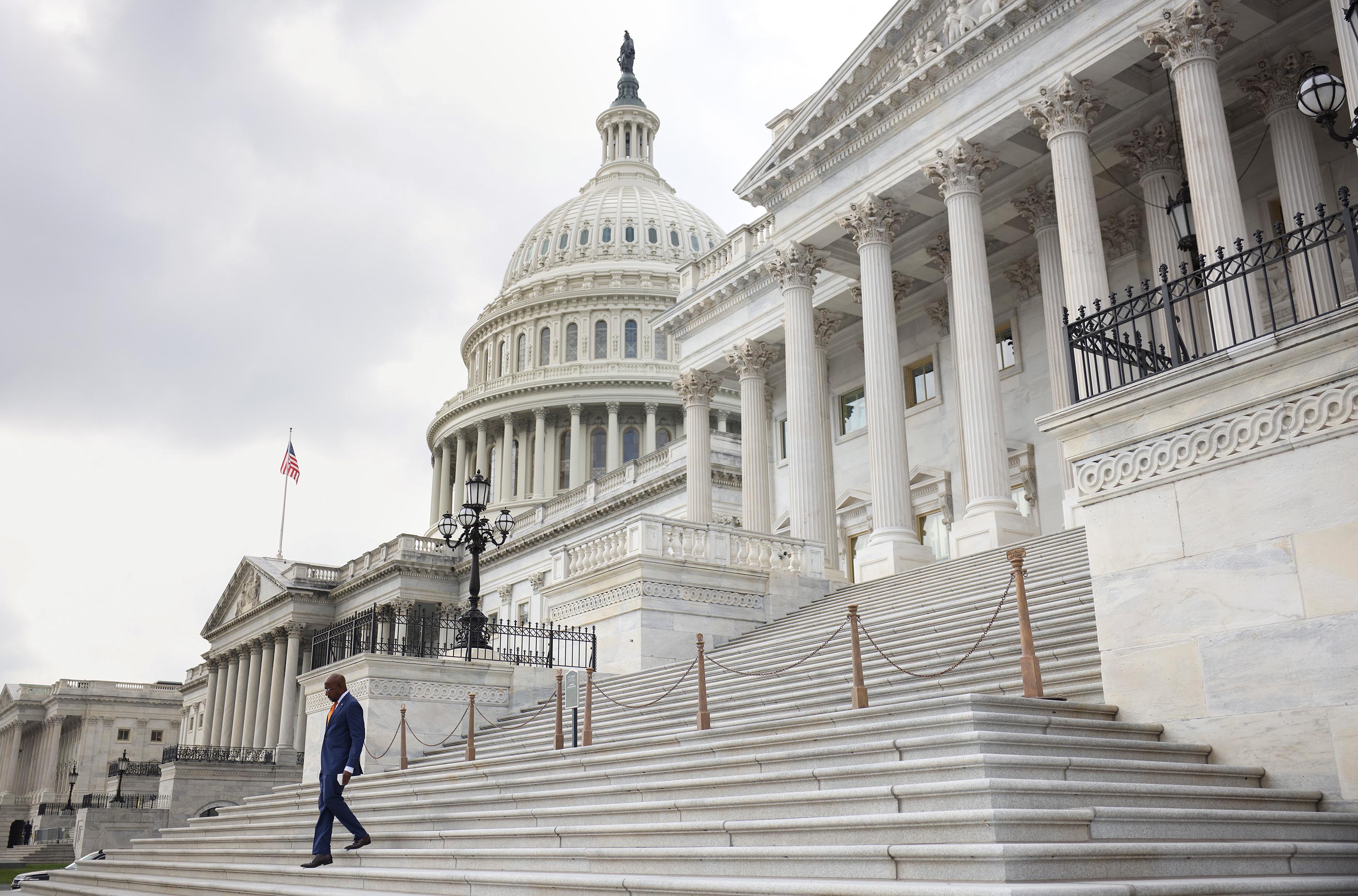
The House of Representatives is expected to vote Tuesday to extend the nation’s debt limit through early December after the Senate approved a stopgap measure last week in a bid to avert a catastrophic default and economic disaster.
However, the dispute between the two parties over how to address the debt ceiling long-term has not been solved, meaning action will be required again in just a few weeks to avert crisis.
Republicans have been insistent that Democrats must act alone to address the debt limit through a process known as budget reconciliation.
Democrats have argued the issue is a bipartisan responsibility. They have so far largely dismissed the possibility of using reconciliation, arguing that process is too lengthy and unwieldy and that the risk of miscalculation would be too high.
Senate Minority Leader Mitch McConnell sent a letter to Prsident Biden at the end of last week with a warning. “I write to inform you that I will not provide such assistance again if your all-Democrat government drifts into another avoidable crisis,” he wrote.
“I will not be a party to any future effort to mitigate the consequences of Democratic mismanagement. Your lieutenants on Capitol Hill now have the time they claimed they lacked to address the debt ceiling through standalone reconciliation, and all the tools to do it. They cannot invent another crisis and ask for my help,” McConnell wrote.
Pelosi backs off of message that Democrats will have to do “fewer things well” to pass wider spending bill
From CNN’s Manu Raju and Morgan Rimmer
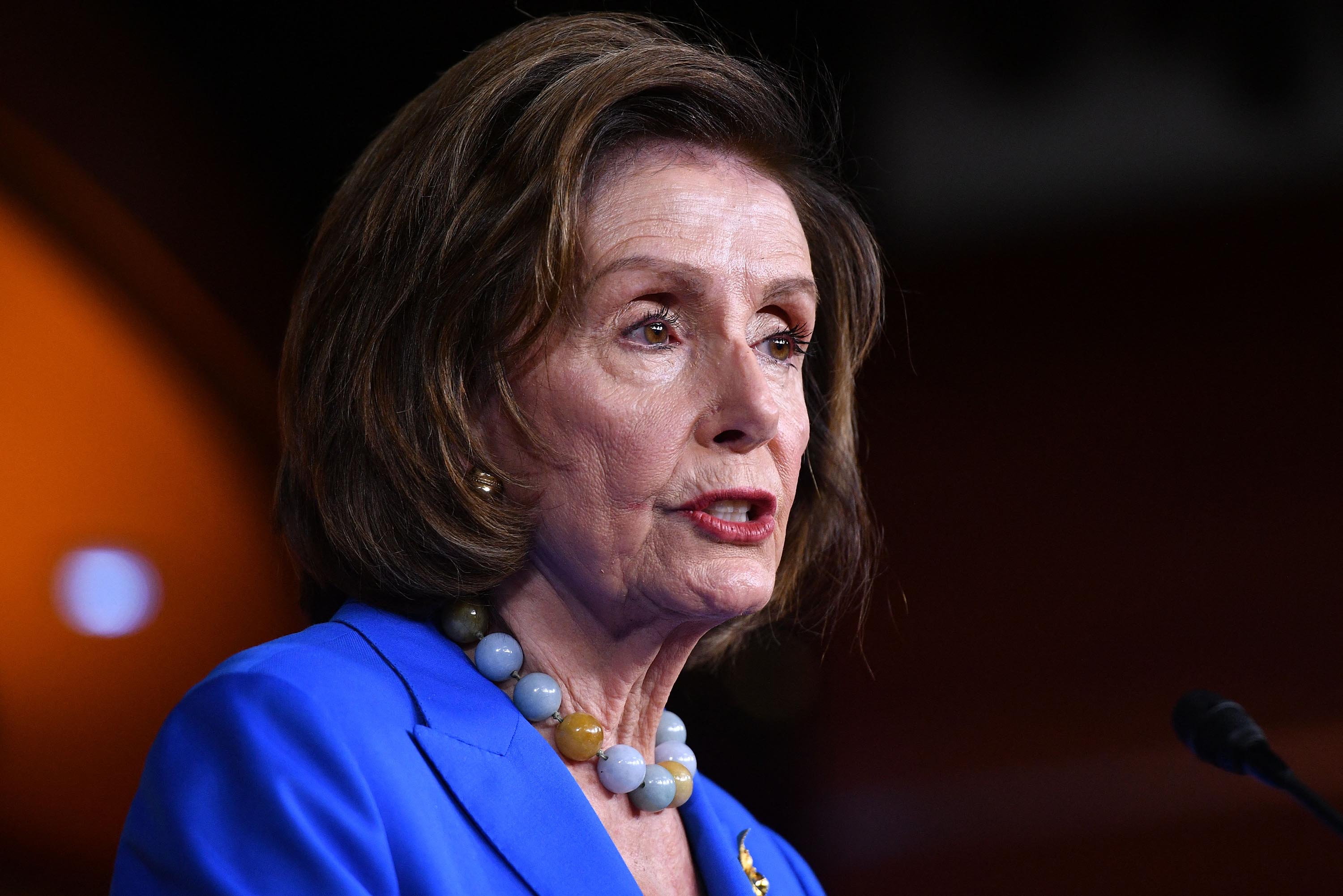
The House is set to vote today to temporarily extend the debt ceiling through early December, but other legislative priorities also hang in the balance — including President Biden’s economic agenda.
In a “Dear Colleague” letter last night, House Speaker Nancy Pelosi suggested that Democrats should do “fewer things well” to get a deal on their larger social safety net package.
But when pressed today by CNN’s Manu Raju about what they should drop – whether it’s universal pre-K, expansion of child tax credit, community college, Medicare expansion, or paid family leave – Pelosi instead suggested that she hopes they won’t have to drop anything, and would instead reduce the timeframe of such provisions to cut the bill’s cost.
“We hope not,” she said, after previously telling reporters, “We have some important decisions to make in the next few days so that we can proceed. I’m very disappointed that we are not going with the original $3.5 trillion, which was very transformative.”
She repeatedly said they may have to pare back the number of years those programs will last in order to reduce the overall cost of the spending bill from $3.5 trillion.
“There are certain things that, I mean we are still talking about a couple of trillion dollars, but it is much less, so mostly we would be cutting back on years, and something like that,” she said in an exchange with CNN.
Here’s a reminder of how the short-term debt ceiling deal was reached in the Senate
From CNN’s Clare Foran
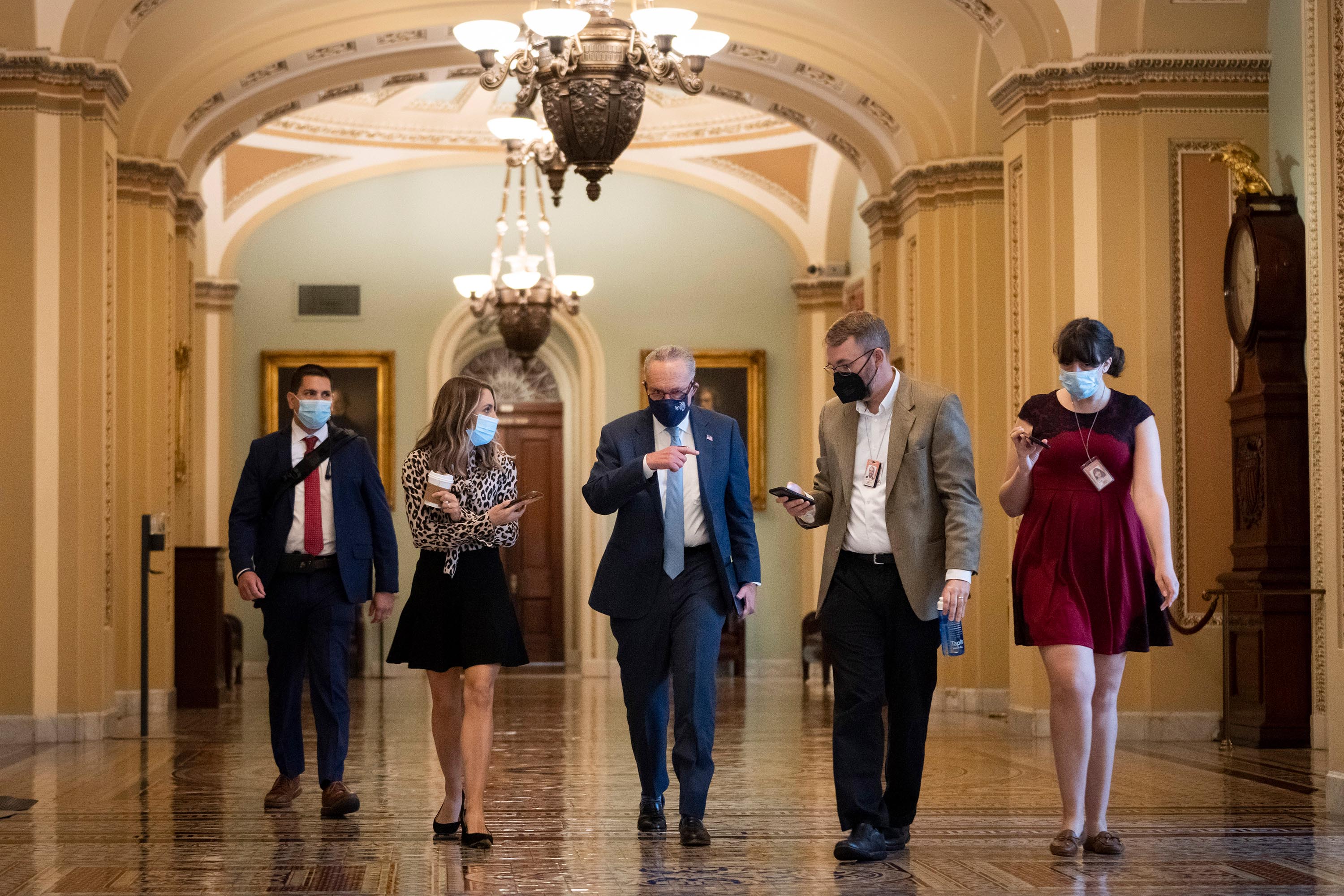
The House of Representatives is expected to vote Tuesday to extend the nation’s debt limit through early December after the Senate approved a stopgap measure last week in a bid to avert a catastrophic default and economic disaster.
Once the Democratic-controlled House passes the short-term extension, it will be cleared for President Biden’s signature.
How we got here: After weeks of partisan deadlock over the issue, Senate Majority Leader Chuck Schumer announced last week that a debt limit deal had been reached, paving the way for the Senate to vote to pass the agreement.
An aide familiar with negotiations told CNN that the agreement increases the ceiling by $480 billion, which is how much the Treasury Department told Congress it would need to get to Dec. 3.
The announcement of the deal came a day after Senate Minority Leader Mitch McConnell publicly floated a debt ceiling proposal as an offer to Democrats, a move that sparked negotiations between the two parties to reach an agreement.
House Majority Leader Steny Hoyer released a statement following the Senate’s passage of the stopgap bill saying that the House would convene on Tuesday to take up and pass the measure.
The clock is ticking for Congress to raise the debt ceiling. Here’s what’s at stake.
From CNN’s Zachary B. Wolf
The “debt ceiling” is exactly what it sounds like – the maximum that the federal government is allowed to borrow. Why is there a maximum? Because Congress set one more than a century ago to curtail government borrowing. But instead of sticking to it, Congress has gone ahead and raised the limit every time it’s been hit.
The arguments in favor are generally the same every time. One is that the money’s already been spent – raising the debt limit just lets us keep paying back our creditors. (More on that in a second.) Another is that failing to raise the limit would cause the US to default on some of its obligations, triggering a crisis in the financial system.
The reasons against it are simpler. Outstanding public debt is about $28.7 trillion. That’s a hard number to choke down, and it’s getting larger every second.
People really concerned about public debt will add in the currently unfunded liabilities of Medicare and Social Security and argue total US liabilities are somewhere north of $156 trillion.

Why this matters: Treasury Secretary Janet Yellen has been warning Congress for months about the consequences of not raising the limit. The US technically reached its limit in August, when a two-year reprieve Congress passed in 2019 expired. The Treasury Department has been moving things around to cover costs since then.
If the US defaults on the debt, there would be a domino effect, said Mark Zandi, the chief economist for Moody’s Analytics:
- Stock markets decline
- Mortgage rates rise
- It’s going to be difficult for businesses to raise the cash that they need to fund their daily operations.
If the threat of those consequences doesn’t shake lawmakers into action and they do default, the problems would only escalate. Particularly, if they didn’t immediately react and a default persisted for weeks, Zandi said it would:
- Cost millions of US jobs
- Unemployment would shoot to double digits
- The stock market could lose up to a third of its value – $15 trillion.
There is a counterargument that the actual default would not be as cataclysmic as anticipated. When the country approached default in 2011, S&P downgraded the US credit rating, but the consequences were minimal since lawmakers ultimately paid the debt.
Source: http://rss.cnn.com/~r/rss/cnn_topstories/~3/eAYs9endG_E/index.html
















